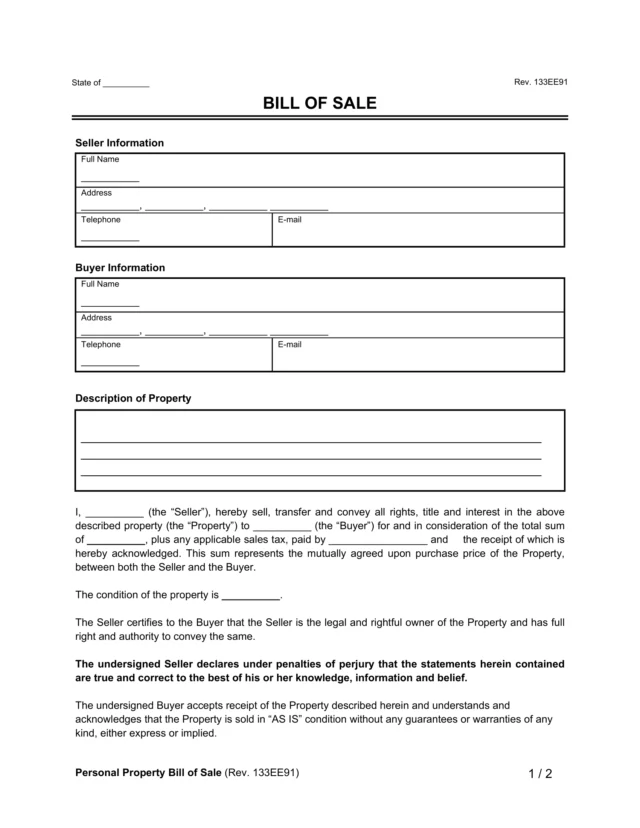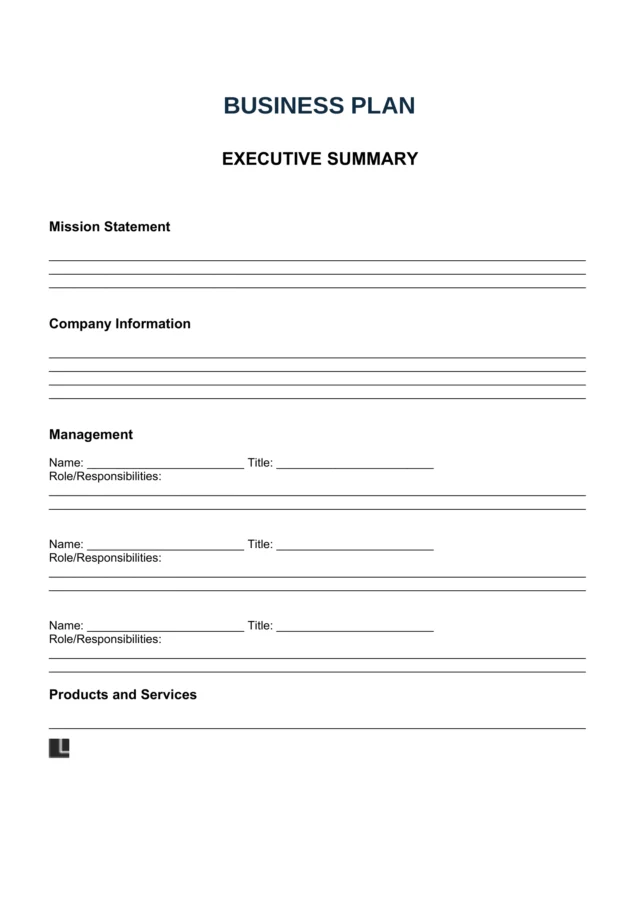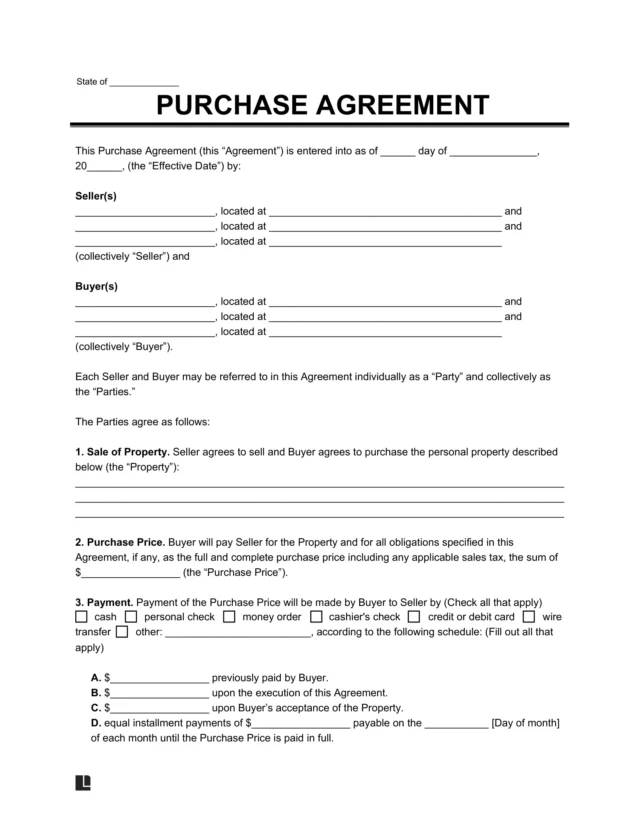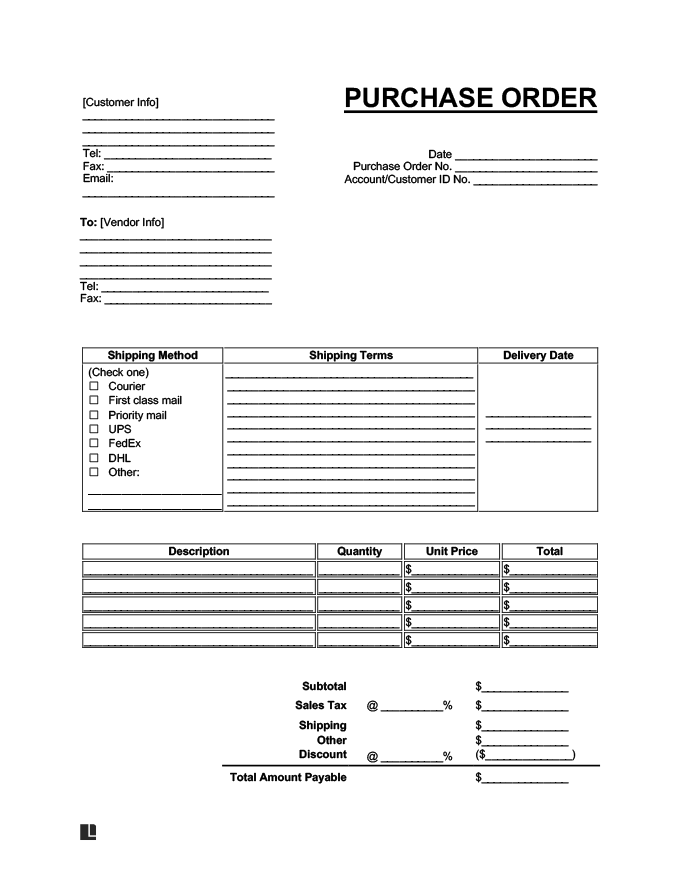What Is a Purchase Order?
A purchase order is a commercial document a buyer uses to place an order for goods or services. It contains several elements, such as a unique order number, the parties’ information, and a product/service description. You can use it to organize the procurement process, ensuring everyone knows the details. With this document, businesses can track their expenses and order what they need to operate.
A purchase order is not the same as an invoice. The buyer writes and submits a purchase order, while the seller distributes an invoice. Sellers use invoices to request payment after goods or services have been provided.
How Does a Purchase Order Work?
The purchase order process starts with the buyer, who writes the initial document. Their purchase order details the specifics of the goods or services they want.
After the buyer writes it, they issue it to the seller. Under general contract principles, a purchase order becomes legally binding once the seller accepts the buyer’s offer. The seller can accept the offer in one of two ways:
- Signing or confirming the PO in writing
- Beginning performance (shipping or producing the goods)
Under the purchase order, the buyer must pay the seller, and the seller must provide the goods or services as specified.
Can I Cancel a Purchase Order?
If you wrote a purchase order but no longer need the products or services, you may be able to cancel it. However, it depends on the purchase order’s terms, the stage of the transaction, and the reasons for cancellation.
Send a notice of contract termination to communicate your intent to the seller. The seller may approve your cancellation, but may refuse it if they’ve already started procuring your order. The longer you wait to cancel, the less likely it is that the vendor will approve.
Types of Purchase Orders
A standard purchase order is used for one-time purchases of goods or services, but that’s not the only type. Legal Templates also offers a blanket purchase order, which covers multiple orders over a set period. It’s useful when the buyer and seller want to engage in an ongoing relationship.
Our standard purchase order template is customizable, so you can tailor it to your needs. Just write in special instructions to create one of the other types of purchase orders:
- Planned purchase order: Includes estimated quantities and delivery dates.
- Contract purchase order: Allows for the parties to negotiate terms and conditions in advance. As the name implies, it’s similar to a business contract.
How to Make a Purchase Order
A well-written purchase order communicates the goods or services you want to purchase. It also provides solid evidence for auditing, expense tracking, invoicing, and operations processes. Learn how to make a purchase order below with Legal Templates’s form.
Step 1 – Add Initial Order Information
While optional, it’s a good idea to add a unique purchase order number to the document. This identifier will simplify recordkeeping.
Step 2 – Input Customer & Vendor Details
Provide your name, address, and contact information as the customer. Specify who the vendor is. If you know the name of your specific point of contact for the vendor, name them.
Step 3 – Include a Purchase Description
Name the items you want included in your purchase. Describe each item, provide the quantity, and list the unit price. This makes it easier for the vendor to provide the right products. If you have a catalog available from the vendor, you may include the items’ Stock Keeping Unit (SKU) numbers for greater clarification.
Step 4 – Detail Sales Tax & Other Costs
Record other costs and related information, such as the:
- Sales tax percentage
- Sales tax cost
- Shipping cost
- Discounts
- Other payable costs
Account for all costs and discounts and record the total amount payable. This is the amount that you (the buyer) will pay the vendor to procure your requested items.
Step 5 – Explain Shipping & Payment Terms
Clarify the shipping terms, such as the shipping method and terms (e.g., the requested delivery date, FOB destination, and CIF (Cost, Insurance, and Freight)). You can also explain the payment terms, like whether payment is due on receipt.
Step 6 – Finalize Details
Include any special instructions in your order. For example, you can request that the vendor contact you immediately if they cannot fulfill your order as requested. Sign the document to authorize the order.
Sample Purchase Order
Wondering what a purchase order looks like? View our free purchase order template below. When you’re ready, use our guided form to create your own. The final document will be available to download in PDF or Word format.









